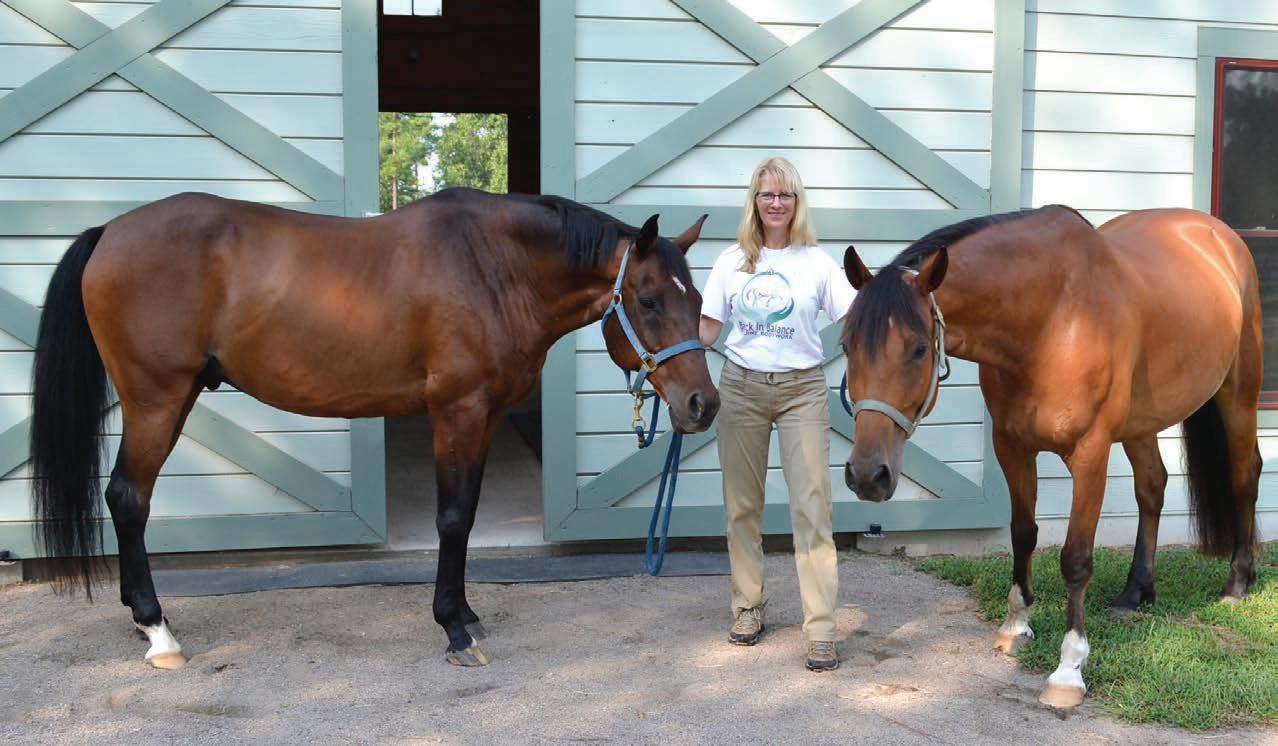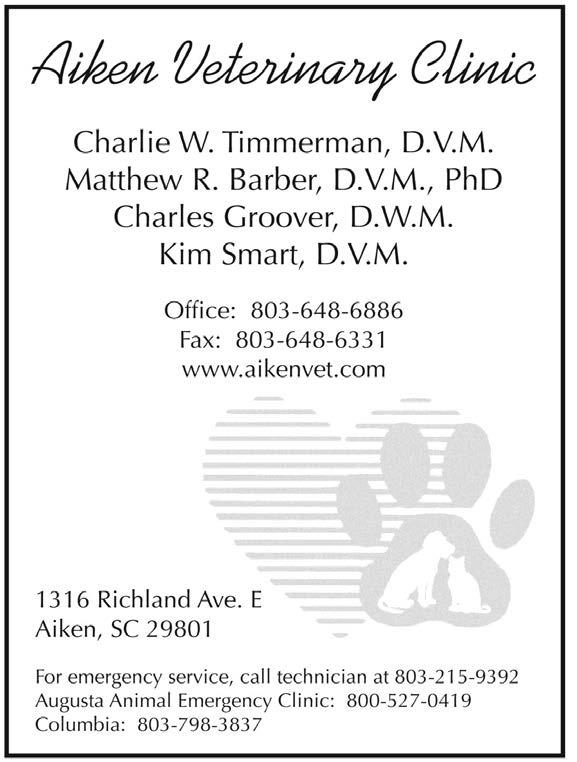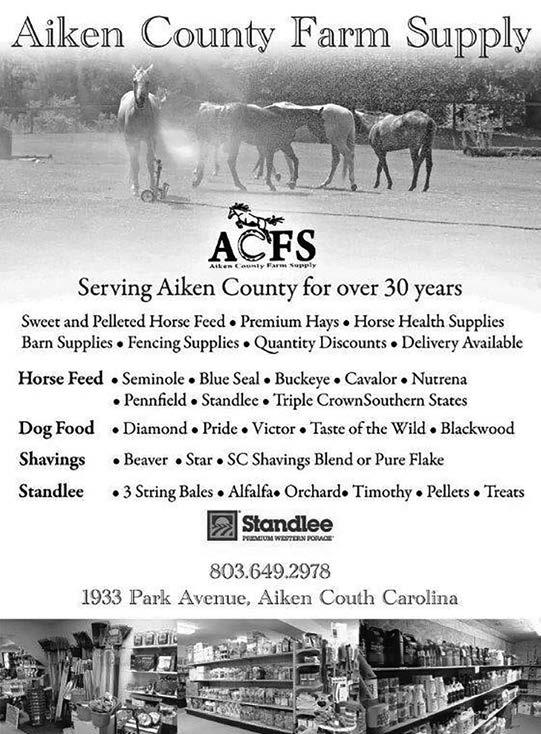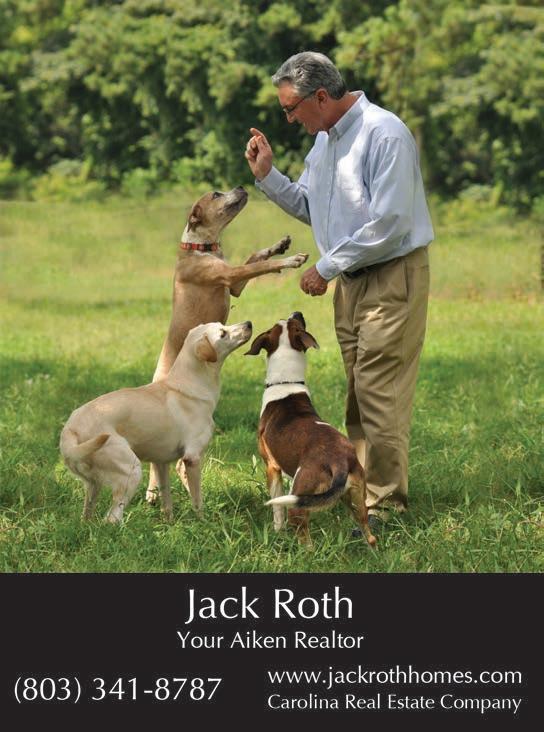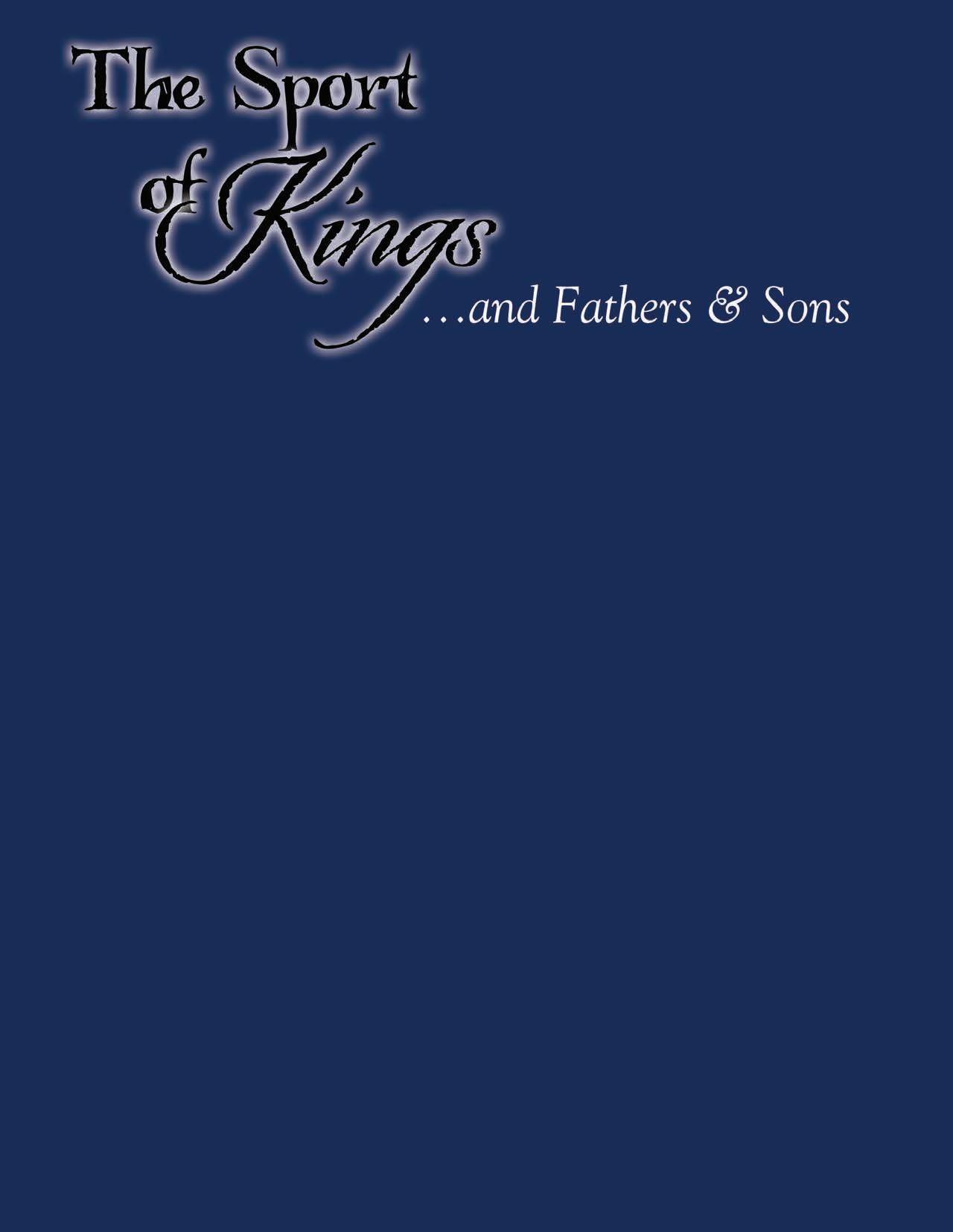
6 minute read
Back in Balance
Back In Balance Back In Balance Back In Balance
Story By Diane Dzingle Photos By Katie Roth
Advertisement
I have been horse crazy for as long as I can remember. I got my first pony when I was nine, and came up through Pony Club riding, mostly OTTB. It was a lot of years of “seat of the pants” riding and a “just make him do it” attitude. That attitude started to shift eight years ago after I rescued a gelding named Turner. Because of his spookiness and propensity for bucking, Turner had flunked out of being a dressage horse and a jumper and was eventually left to starve. He was a very friendly, personable guy from the beginning, so when I was finally able to start riding him I was pretty sure it wasn’t just a “bad attitude” that made him so difficult to ride, almost dangerous when asked to do something as seemingly simple as a canter transition. It is here that I started my journey to understand what can make horses misbehave and refuse to perform.
After eliminating any possible problems with saddle fit, hoof care, dental and chiropractic, I tried using an equine bodyworker and felt it was the first thing Turner responded to and received at least temporary benefit from. I was intrigued and wanted to know more. After much research, I choose to study with Jim Masterson and become a MMCP (Masterson Method® Certified Practitioner). I was attracted to this method because it works WITH the horse, not on the horse. The practitioner learns to read the horse’s response to light touch and stay under the natural bracing mechanism. This allows the therapist to access a level of the nervous system that enables the horse to release deep stress and tension in muscles and major junctions of the body.

I went on to become certified in Equine Structural Integration because I wanted a way to be able to work with connective tissue and fascia. Connective tissue permeates the body in a 3-dimensional web that provides form, support, protection and flexibility, as well as being a communication network. Because of this interconnected nature, restrictions and holding patterns in one area of the body can transmit strain far into the web, often seen as compensatory injuries. Structural Integration aligns and balances the body by lengthening and repositioning the connective tissue. This allows the muscles to move with greater and repositioning the connective tissue. This allows the muscles to move with greater ease and the body to become coordinated and efficient in ease and the body to become coordinated and efficient in
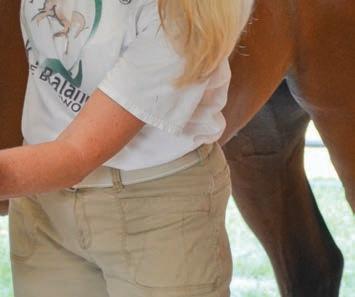

Diane Dzingle of Back in Balance Equine Bodywork shares her journey of becoming an equine bodywork therapist. Her hands-on approach is used to prevent and relieve stress in horses as well as assist in recovery from injury. Her methods are also a tool for detecting tension, abnormalities, and other problems before they become apparent to the eye. Diane recently moved from Battleground, Washington to Aiken and continues to serve clients all over the U.S. as an integral part of their horse’s high performance program.




Diane is also a representative for Theraplate, a revolutionary therapeutic platform used for rehab, physical therapy and sports conditioning for people and horses. By stimulating circulation through involuntary muscle contraction, it is a concussion free therapy that has shown dramatic results in healing everything from suspensory injury and laminitis to helping horses with cushings, EPM and tying up to name a few. There is scientific evidence that Theraplate increases bone density and builds muscle mass so it is a useful tool for horses on stall rest as well as for horses in work. Theraplate is also great for maintenance and preventative, offering protocols for warm up and cool down. Theraplate is an official sponsor of the USEF; horses stand on it because it makes them feel better!
its use of energy. This equates to better performance! Together, my credentials with the Masterson Method® and Structural Integration give me the tools and understanding to work with the horse to release tension, restrictions and holding patterns that can affect attitude, ability and performance.
Bodywork does not include skeletal adjustments; that is chiropractic and something only a veterinarian trained in chiropractic should do. However, one of the benefits of bodywork is that a horse that has soft muscles and supple connective tissue will hold his chiropractic adjustment longer than a horse with a lot of tension.
Regardless of breed or discipline, all horses can benefit from this work. Like people, horses suffer from repetitive work, stress, injury, and trauma, all of which negatively impact the ease and comfort with which they can perform.
I love the bond this work has given me with my horses both in and out of the saddle, and the connection I make with every horse I get the opportunity to work with. I love that every horse is different and has something new to teach me and that we can communicate on such a subtle level. I love that I found my passion, which means my job is not work but something I love to do and will never tire of. Being able to help horses and their people be successful together is a really awesome feeling.
Because bodywork is my passion, I never tire of researching, learning, attending clinics, and asking questions. This thirst for knowledge is like nothing I have experienced before and so somewhat of a surprise! I also find that as my knowledge and experience and understanding grow, my attitude continues to shift and morph concerning some of the things we expect of our equine partners.
My rescue horse Turner is now 17 years old. After being my guinea pig as I learned how to be a bodywork practitioner, he is now spook and buck free and by FAR more physically capable and comfortable than he was at nine years old. I also recognize the limitations of his conformation and have tailored my ambitions to reflect that. A 25-mile competitive trail ride, you bet! Novice level eventing, no problem! Upper level dressage horse, not gonna happen — and that is just fine with Turner and me.
Does your horse show these signs of tension, muscle soreness and imbalance?
• Decreased coordination • Trouble bending in one direction • Cinchy / girthy or being cold backed • Unwillingness to work • Trouble picking up correct lead • Head tossing • Poor attitude • Bucking, rearing
The benefits of bodywork:
• Improve performance • Relieve soreness • Restore range of motion • Reduce spasms, release endorphins • Enhance proprioception • Drain toxins and increase oxygenation
